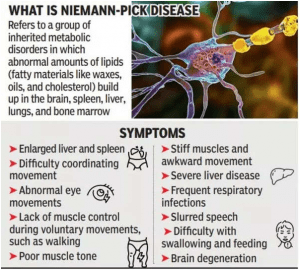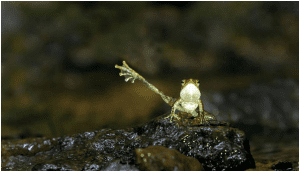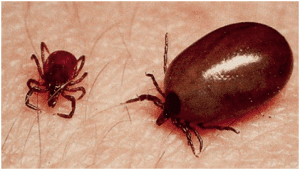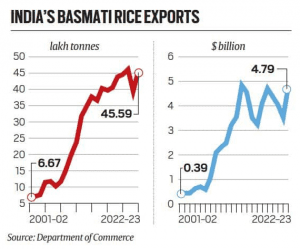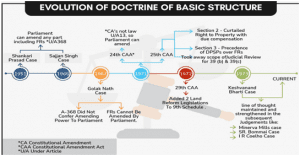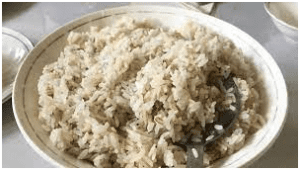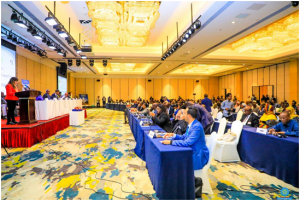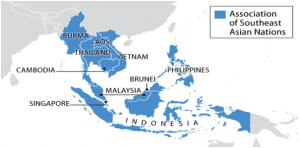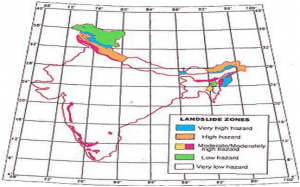TOP 5 TAKKAR NEWS OF THE DAY (28th OCTOBER 2023)
1. TECTONIC PLATES ON VENUS
TAG: GS 3: SCIENCE AND TECHNOLOGY
THE CONTEXT: As per a new study, Venus, often referred to as Earth’s sister planet, may have experienced tectonic activity about 4.5 billion to 3.5 billion years ago.
EXPLANATION:
- This tectonic movement is believed to have played a crucial role in shaping Venus’s carbon dioxide- and nitrogen-rich atmosphere.
- The research raises the possibility that ancient Venus could have supported microbial life, indicating that Earth and Venus might have shared similar conditions in the distant past.
HIGHLIGHTS OF THE STUDY:
- Tectonic Activity on Venus:
- The study explores the idea that plate tectonics, a geological process responsible for shaping Earth’s surface, may have also operated on Venus billions of years ago.
- Plate tectonics involves the movement of large pieces of a planet’s outer shell, leading to the formation of continents, oceans, and mountains.
- Impact on Venus’s Atmosphere:
- The researchers suggest that this ancient tectonic activity could have influenced Venus’s atmosphere.
- Today, Venus’s atmosphere is primarily composed of carbon dioxide (96.5%) and nitrogen (less than 3.5%).
- The study proposes that these tectonic processes contributed to the planet’s unique atmospheric composition.
- Potential for Ancient Life:
- The presence of tectonic activity on Venus in the distant past opens the possibility that microbial life could have existed there.
- This finding underscores the similarities between Earth and Venus in terms of geological processes and conditions conducive to life.
- Changes Over Time:
- While Venus and Earth share many similarities in terms of size, mass, density, and volume, they have evolved differently.
- The study suggests that Venus may have transitioned from early tectonic activity to a “stagnant lid” model where the planet’s surface has a single, largely immobile plate, limiting gas release into the atmosphere.
- Planetary Transitions:
- The research challenges the notion that planets maintain a single tectonic state throughout their existence.
- It suggests that planets, including Earth and Venus, may transition between different tectonic states, which could impact their habitability.
- Future Exploration:
-
- The upcoming NASA mission to Venus, DAVINCI, is expected to provide further insights and potentially confirm the findings of this study.
- Researchers are also interested in understanding how and why Venus lost its plate tectonics over time.
CONCLUSION:
- In essence, this study highlights the intriguing possibility of tectonic activity on ancient Venus and its role in shaping the planet’s atmosphere and habitability.
- It underscores the dynamic nature of planets and how they can transition between different geological states.
- The upcoming mission to Venus offers an opportunity to gather more data and expand our understanding of Earth’s enigmatic sister planet.
2. DRAFT OF BILLS REPLACING CRIMINAL LAWS
TAG: GS 2: POLITY AND GOVERNANCE
THE CONTEXT: The Parliamentary Standing Committee on Home Affairs postponed its adoption of a draft report on three Bills seeking to replace the existing criminal laws.
EXPLANATION:
- The panel has scheduled its next meeting for November 6, which gives members an additional week to review the draft report and offer their suggestions.
- The committee aims to have the report ready for the Winter Session of Parliament.
WHY THE DELAY?
- Late Release of Draft Report:
- The English version of the draft report was shared one week before and the Hindi version was given to members of the Parliamentary panel only hours before it was set to be adopted.
- This short notice didn’t sit well with some members.
- Opposition’s Discontent:
- Three members have registered their objections.
- They’re calling for various alterations in the proposed Bharatiya Nyaya Sanhita, 2023, meant to replace the Indian Penal Code, and the Bharatiya Nagarik Suraksha Sanhita, 2023, which is set to replace the Criminal Procedure Code (CrPC).
- More objections are anticipated.
- Dispute Over Hindi Nomenclature:
- The use of Hindi names for the Bills has been a source of disagreement.
- The panel’s draft report argues that since the text of the Bill is in English, it doesn’t go against the provisions of the Constitution, which specify that English should be used in the Supreme Court and High Courts, as well as for Acts, Bills, and legal documents.
- Inadequate Consultation:
- The Opposition members have expressed concerns about the limited consultations on the proposed bills.
- They believe that given the extensive changes in the criminal laws, it’s vital to have more talks with state governments and concerned parties.
- Request for More Time:
-
- Opposition members have requested an extension of at least three months to finalize the committee’s report on the bills.
- They’re worried that rushing through these laws for short-term political gains could undermine the legislative scrutiny process.
3. AVAIN FLU
TAG: GS 3: SCIENCE AND TECHNOLOGY
THE CONTEXT: Scientists have detected the presence of avian flu for the first time in the Antarctic region, raising concerns for remote populations of penguins and seals.
EXPLANATION:
- Scientists from the British Antarctic Survey (BAS) have identified the presence of Highly Pathogenic Avian Influenza (HPAI), commonly known as avian flu, in the Antarctic region for the first time.
- This discovery raises concerns for the welfare of remote populations of penguins and seals.
- The virus, which affects birds and can be deadly, was detected in brown skua (a predatory seabird) populations on Bird Island, South Georgia.
- It is suspected that it might have reached the region from South America.
HIGHLIGHTS OF THE FINDINGS:
- The virus may have been introduced to the Antarctic region from South America.
- Scientists have observed HPAI outbreaks in Europe, North America, South Africa, and South America, heightening concerns about its spread to vulnerable Antarctic wildlife.
- Threat to Wildlife:
- Avian flu primarily affects birds, and highly pathogenic strains like H5 and H7 can cause high mortality in wild bird populations.
- The virus can also be transmitted to mammals, particularly through predators and scavengers that feed on infected birds.
- Previous Outbreaks:
- In 2022 and 2023, HPAI H5N1 rapidly spread in South America, impacting seabird populations.
- It travelled southward, affecting 500,000 seabirds and causing significant outbreaks in marine mammals, resulting in the deaths of 20,000 South American sea lions.
- Response:
- The BAS and the Government of South Georgia & the South Sandwich Islands (GSGSSI) are closely monitoring the situation and have implemented enhanced biosecurity measures.
- They are working together to manage the outbreak.
- Most Vulnerable Species:
- According to the researchers’ risk assessment, gulls, skuas, birds of prey, terns, shorebirds, fur seals, sea lions, and other marine mammals are considered the most vulnerable species to avian flu.
- High-Risk Regions:
-
- The sub-Antarctic islands located between the southern tip of South America and the Antarctic Peninsula, including the Falkland Islands, are identified as high-risk regions due to the presence of various vulnerable wildlife groups.
AVIAN FLU:
- Avian influenza or bird flu refers to the disease caused by infection with avian (bird) influenza (flu) Type A viruses.
- These viruses naturally spread among wild aquatic birds worldwide and can infect domestic poultry and other bird and animal species.
- Bird flu viruses do not normally infect humans.
- However, sporadic human infections with bird flu viruses have occurred.
CONCLUSION:
- The detection of avian flu in the Antarctic region raises concerns for the well-being of penguins, seals, and other wildlife.
- The virus’s potential impact on these vulnerable species highlights the importance of ongoing monitoring, research, and biosecurity measures to mitigate the spread of this disease.
- Steps should be taken to avoid the consequences on the unique ecosystems of the Antarctic region.
4. INDIA AND QATAR’S ENERGY SHARE
TAG: GS 2: INTERNATIONAL RELATIONS
THE CONTEXT: The death sentence given to eight former personnel of the Indian Navy by a court in Qatar presents the biggest challenge yet to New Delhi’s historically friendly ties with Doha.
EXPLANATION:
- In the relationship between nations, trade relations play a significant role.
- In the case of India and Qatar, the balance of trade is tilted heavily in the Qatar’s favour — which means imports from Qatar far outweigh India’s exports.
- The nature of the trade, which is dominated by a commodity that is very important to India, now and for the foreseeable future, also provides Qatar significant influence.
- It is India’s largest source of liquefied natural gas (LNG) — gas that has been super cooled to liquid form so that it can be transported by sea — accounting for more than half of overall import volumes of the fuel.
- Indeed, LNG is at the heart of the trade relationship, it makes up almost 50% of overall Indian imports (by value) from Qatar.
GAS IMPORT DEPENDENCY:
- India’s import dependency in natural gas is around 50%.
- Given the government’s concerted push to increase natural gas consumption, imports are only likely to rise in the coming years, even if domestic production of natural gas increases.
- Government-owned Petronet LNG, India’s largest LNG importer, has a long-term contract with Qatar for the import of 8.5 million tonnes per annum (mtpa) of LNG.
- India has set itself an ambitious target to increase the share of natural gas in the primary energy mix to 15% by 2030 from a little more than 6% at present.
- This is bound to result in a rapid increase in LNG imports over the next few years.
- Natural gas is seen as a significantly cleaner alternative to conventional petroleum fuels like diesel and petrol, and is usually cheaper than crude oil.
- For India, which has an import dependency of over 85% in crude, gas is both more affordable and a better transition fuel in the energy transition pathway.
- Given this situation with India’s energy security concerns and ambitions, the case of the retired Navy personnel presents a sensitive challenge for Indian diplomacy.
INDIA, QATAR, AND LNG:
- India’s total imports from Qatar in FY2022-23 were valued at $16.81 billion, of which LNG imports alone were worth $8.32 billion, or 49.5%.
- India’s other major imports from Qatar are also fossil fuel-linked commodities and products, such as liquefied petroleum gas (LPG), plastics, and other petrochemicals.
- On the other hand, India’s exports to Qatar were valued at just $1.97 billion in FY2022-23.
- The major exports include cereals, copper articles, iron and steel articles, vegetables, fruits, spices, and processed food products.
- India imported a total 19.85 million tonnes of LNG in FY23, of which 10.74 million tonnes, or 54%, came from Qatar.
- This means that apart from the 8.5 million tonnes of LNG that Qatar supplied as part of the Petronet LNG term contract, nearly 2.25 million tonnes of additional gas was purchased from Qatar.
- While Indian LNG importers, predominantly the public sector oil and gas companies continue to make efforts to diversify sourcing, it could be years before the high reliance on Qatar can be reduced to a meaningful extent.
THE GLOBAL LNG MARKET:
- The global LNG market is a seller’s market after Russia’s invasion of Ukraine and the sanctions that have disrupted Russian natural gas supplies to Europe.
- After the war broke out, prices, particularly of LNG spot cargoes, surged globally.
- The war has put Qatar, the world’s largest exporter of LNG, in a unique position of strength.
- According to industry experts, the extreme price volatility of the past couple of years in global LNG markets has established that term contracts, and not spot purchases.
- This has pushed LNG importers all over the world, including India, to scout for long-term contracts with major suppliers, of whom Qatar is the foremost.
- Over the past few weeks, Doha has announced 27-year LNG supply deals with French, Dutch, and Italian energy majors.
- In the preceding months, it had signed long-term contracts to supply LNG to China and Germany.
- Petronet’s term contract runs out in 2028, and negotiations for an extension are currently under way. India is also looking to sign more long-term LNG contracts.
5. ISRAEL AND PALESTINIAN TRUCE
TAG: GS 2: INTERNATIONAL RELATIONS
THE CONTEXT: Recently, the United Nations General Assembly called for an immediate humanitarian truce between Israel and Palestinian militants Hamas and demanded aid access to the besieged Gaza Strip and protection of civilians.
EXPLANATION:
- The resolution drafted by the Arab states is not legally binding, but politically significant.
- It passed to a round of applause with 120 votes in favour, while 45 abstained including India and 14 including Israel and the United States voted against.
- The General Assembly voted after the Security Council failed four times in the past two weeks to take action.
- A two-thirds majority was needed for the resolution to pass, in which abstentions do not count.
ASSEMBLY STRESSES PREVENTING WIDER WAR:
- The assembly stressed the “importance of preventing further destabilization and escalation of violence in the region”.
- It called on “all parties to exercise maximum restraint and work toward this objective.”
- The General Assembly asked Israel to rescind its order for civilians in Gaza to move to the south of the enclave.
- Israel ordered some 1.1 million people in Gaza – almost half the population to move south on Oct. 12.
- The General Assembly also “firmly rejects any attempts at the forced transfer of the Palestinian civilian population.”
- Israel has vowed to wipe out Hamas, which rules Gaza, after the militants killed 1,400 people and took hundreds of hostages in the attack three weeks ago that surprised and shocked Israelis.
- Israel has struck Gaza from the air, imposed a siege and is preparing a ground invasion. Palestinian authorities say more than 7,000 have been killed.
- The General Assembly called for “the immediate and unconditional release of all civilians who are being illegally held captive.”
- The initial draft of the resolution put forward by Arab states called for an immediate ceasefire. The resolution adopted “calls for an immediate, durable and sustained humanitarian truce leading to a cessation of hostilities.”
- Israel has rejected calls for a ceasefire because it says Hamas would benefit.
FOR FURTHER INFORMATION, PLEASE REFER TO THE ISRAEL AND HAMAS NEWS IN THE DNA OF OCTOBER 2023.


